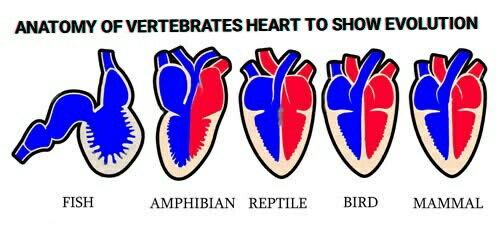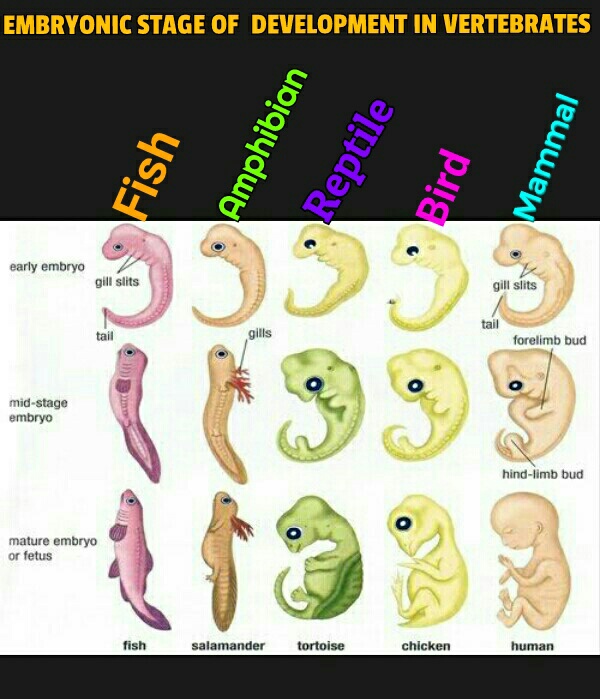Welcome! Our Biology Lessons continues. Do have a great moment studying with us.
Lesson Note
Subject: Biology
Topic: Organic Evolution
Lesson Objectives: At the end of the lesson, learners should be able to:
- Define Organic evolution;
- State the types of evolution;
- Enumerate the evidences of evolution;
- Explain the theories of evolution.
PERIOD 1
EVOLUTION (HISTORY OF LIFE)
The world is believed to have been occupied by millions of different plants and animals. These plants and animals are adapted to different kind of habitats. There are two theories that support the history of life.
They are ;
- Divine creation: This theory of divine creation states that every living things are created by God within six days.
- Organic evolution: The theory of organic evolution believes
that the first living organism is formed from certain molecules such as methane, ammonia, hydrogen and water vapour which combined under particular ultraviolet radiation from the sun and electrical lighting of the hot atmosphere to form the living thing about two billion years ago.
Definition of Organic Evolution
Organic evolution is therefore defined as a series of gradual changes which living organism had undergone in response to changes in environment since the beginning of life. Organic Evolution has two theories which are discussed below:
1. LAMARCK’S THEORY OF ORGANIC EVOLUTION
Jean Baptist Lamarck, a French biologist was the first to put forward the theory of organic evolution in 1801. His idea of evolution was based on;
- The Theory Of Need
This theory states that the development of a new part or organ by an organism (plant or animal) result from the need of part or organ to the organism. For instance, the early ancestors of snake had short bodies and legs. As the land was charging during its formation, many narrow places and dense vegetation were formed. For snake to walk through narrow places and dense vegetation, they started stretching their bodies to become elongated so that they could easily crawl through the vegetation instead of walking.
- Use and Disuse:
The theory emphasized that frequently used organs become well developed and achieve but become functionless or disappeared with disuse. For instance, each generation of snakes continue to stretch their bodies resulting in the strengthening of their bodies . Their limbs become useless and strength less and finally disappeared since they would hinder crawling through narrow places and dense vegetation.
- Theory Of Acquired Characteristics Of Inheritance
Structures or variation acquired by organism during their life time are transmitted to the next generation by inheritance.
The modern giraffe believed to have evolved from a giraffe with short neck and short legs. When competition for low grasses among herbivorous animal became difficult, the short neck and short legged giraffe started to starch their neck and four legs so as to reach the leave of the trees.
The load and duck originally had no webs between their toes, but as they continue frequently visiting water for food, the need to develop webs for swimming become a necessity.
2. DARWIN’S THEORY OF ORGANIC EVOLUTION BY NATURAL SELECTION
Charlie’s Darwin, a British biologist in 1859 propounded a theory of organic evolution by natural selection leading to the origin of species. His theory of natural selection is as follows:
- Overpopulation
All living organisms should be allowed to produce more offspring than can survive.
- Struggle for existence
Due to overpopulation of offspring, there is a constant competition for existence among offspring
- Offspring shows variation
No two individual are exactly the same .
- Adaptive characteristics
Some of the offspring’s are well adapted or fitted to survive the competition than others.
- Inheritance Of Adaptive Characteristics.
The well adapted ones or the fittest will transmit such variation to their offspring’s.
Those with poor adaptation will die off (extinct).
- Development Of New Species.
An accumulation of favourable variation will in a long time head a divergence (spread) from the original stock resulting in the formation of new species.
TYPES OF EVOLUTION
1. Divergent Evolution: is that for which related species or their parts become different because of the availability of niches in the environment. For instance, the month part of insects, birds and limbs of vertebrate.
2. Convergent Evolution: In this type of evolution, unrelated parts of organisms are modified to look similar which arises because of a common need in the environment. Example, the need to fly caused the birds and bat to develop wings. Birds are aves while bat are mammals.
MODERN THEORIES OF ORGANIC EVOLUTION.
Theory of organic evolution as stated by Darwin has been modified. The modern theories of evolution are now based on genetics, ecology, cytology, paleontology, physiology, anatomy and embryology.
PERIOD 2
EVIDENCES OF EVOLUTION
Evolution of any process are continuous but slowly, the evidences have been derived from several sources including:
1. CYTOLOGY
Biochemical similarities – The studies on the structure and function of cells have revealed that biochemical and fine structure of the cell of different organisms are very alike with respect to the following:
- Nucleic acids
- ATP and cytochrome
- Organelle like mitochondria
- Serological test – is the study of the test tube reactions between antigens and antibodies. Possible evolutionary relationship can be detected by comparing the blood proteins.
2. Serological test has shown that human blood is much closer to that of the great apes like chimpanzees.
3. Physiology (molecular record): The evolutionary relationship has been established from molecular records, based on the fact that hereditary information is stored by all organisms in nucleic acids mainly DNA.
4. Paleontology (fossil Record).
Plants and animals that lived in the past have been studied from fossil record, fossils are generally preserved in sedimentary rocks which were formed by the deposition of silt, sand or calcium carbonate over thousands or even million of years.
5. Comparative anatomy
Many groups of organisms especially vertebrates show similarities in anatomical features such as;
- Pentadactyl limb
- Brain
- Heart

6. Embryology: Embryos of many organism reassemble the embryo of their ancestor especially during the early stage of development the early human embryo for example has well developed tail and a series of pouches (fold of skin) and slit making it look very much like an early embryo of rabbit.

7. Evidence from vestigial organs
Vestigial organs are rudimentary or organs still found in animals and plant examples are
Appendix in man which is functionless in man but useful in herbivore ;
Coccyx (caudal vertebrae)of man are together and reduced to small size has no specific function in man.
Pyramidal nasi muscle of forehead and posterior auricular muscles of the ears
Posterior auricular muscle is functionless in man but used by other mammals in moving the pinnae.
8. MUTATION THEORY OF EVOLUTION
Mutation is defined as a sudden changes in genetic make up (DNA) either in gene or chromosomes resulting in a new characteristic or trait that can be inherited . Mutation occurs during meiosis when the sperm and egg are being formed. When mutation occurs, it will lead to production of offspring with marked difference in appearance from other member of the population of the species called a mutant.
Mutation provides raw materials for organic evolution through natural selection of new species.
TYPES OF MUTATION
- Gene point mutation are sudden changes in the structure of DNA (gene code) at a particular point or area.
- Chromosome mutation are caused either by breaking off or fragmentation of chromosomes during mutation.
CAUSES OF MUTATION
- X- rays
- Ultra – violet light
- Cosmic radiation
- Reassortment of gene
Forces responsible for evolution
- Mutation
- Reassortment of gene
- Recombination of gene
Done studying? See previous Lessons in Biology
Take a quick test for this lesson!
- What is Organic evolution?
- State the types of evolution.
- Enumerate the evidences of evolution.
- Explain the theories of evolution.
Questions answered correctly? Bravo!
Do stay connected to itsmyschoollibrary.com for more educational contents!
